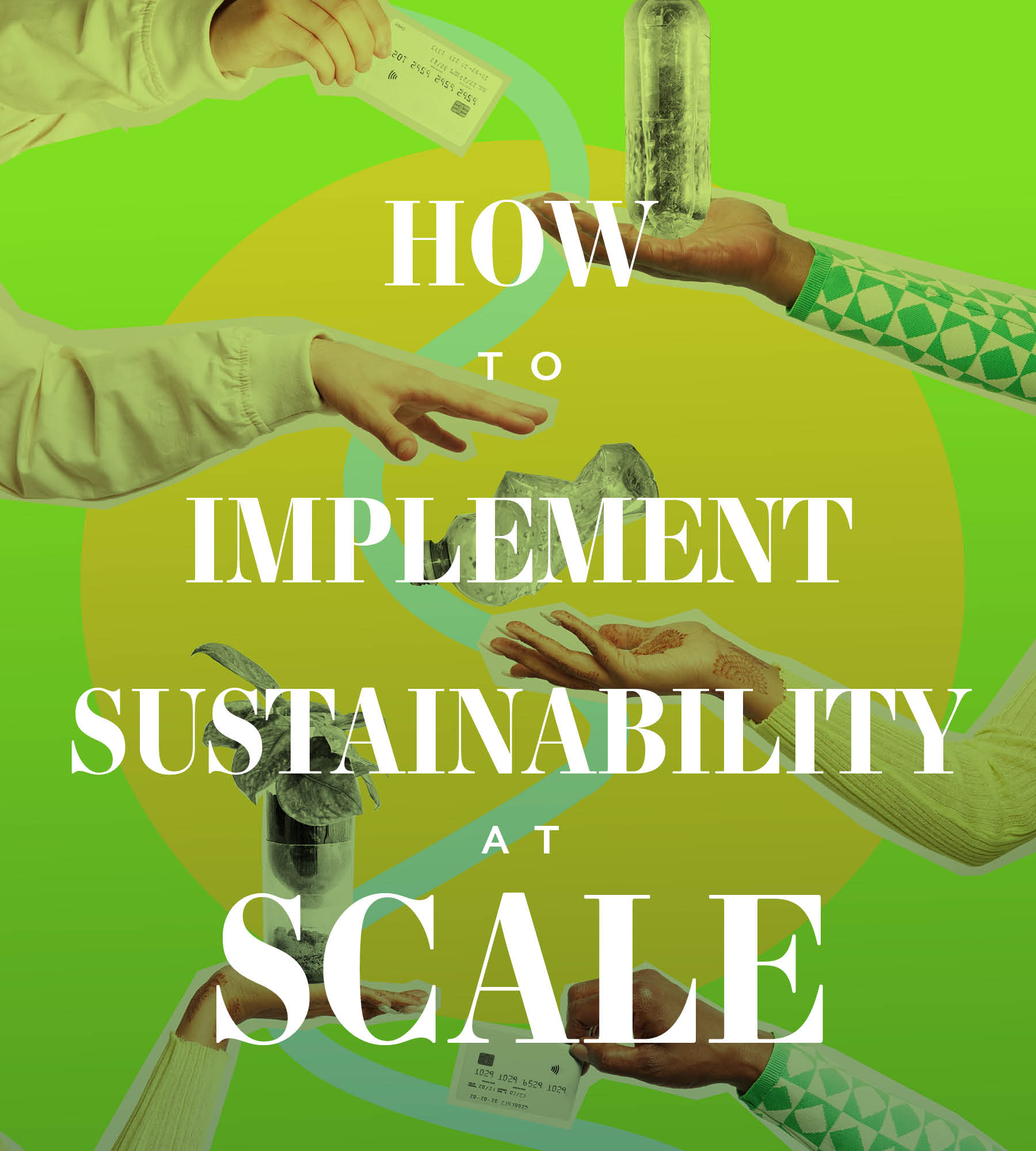Language
You can read the magazine in one of the following languages
Geolocation
You can read the global content or the content from your region

Dear CEO, do you recognize this? You believe sustainability efforts are vital for the long-term success of your organization. You’ve set targets and plans to meet them, launched new initiatives and programs, and made someone responsible for making it happen.
But everything is moving so slowly. And you’re getting impatient – rightly so.
Research shows that you’re not alone. A recent GlobeScan study found that despite the stated importance of sustainability to commercial success, only 37 percent of senior leader respondents believe sustainability is “very integrated” into the core of their business.
During our latest roundtable, over 20 leaders reported a similar intention–action gap: “We want to become sustainable, but we keep prioritizing short-term profits.”
Even though you’ve prioritized sustainability efforts, changing everyone’s day-to-day decision-making at scale requires a systemic change. From our experience helping dozens of companies transform, here are three proven ways to make this happen.

Frontrunner companies have made their sustainability trade-offs explicit to guide day-to-day decisions.
For example, women’s clothing brand Eileen Fisher has focused on reimagining a consumer experience that doesn’t destroy our planet through a cycle of overconsumption. The company prioritizes timeless wear over trendy wear and unprecedented transparency over the surprise factor.
Trade-offs might impact revenue in the short-term, but they will reduce waste, energy and transportation costs while building long-term brand recognition and reputation.
Eileen Fisher has made these trade-offs visible in two ways: First, the company has reduced production by releasing only a dozen garments every season that consumers can combine to create multiple outfits. A digital tool allows them to mix and match garments to imagine the variety of their purchases.
Second, they have increased transparency by allowing customers to plan their purchases by viewing the clothes that will be released in the upcoming months.
At Patagonia, trade-offs also encourage consumers to buy less; the company has prioritized repairability and longevity even over selling more clothes. In an interview, Vincent Stanley, Director of Philosophy, explained: “The environmental constraints we’ve placed on ourselves generate innovation.”
These innovations include DIY repair guides and videos, plus a resale program.
Even-over statements – written as ‘one good thing even over another good thing’ – clarify the type of sustainability/profit sacrifice you expect everyone in the organization to make. Setting such trade-offs might impact revenue in the short-term, but they will reduce waste, energy and transportation costs while building long-term brand recognition and reputation.

Another way to shift decisions toward more sustainable outcomes is by embedding non-financial metrics into every financial conversation – including reporting and incentives.
Natura, a Brazilian cosmetics company, is part of a growing group of companies that have adopted an integrated profit and loss statement (P&L). For all of its business actions, it measures the net social and environmental value, not only the financial value. Furthermore, non-financial metrics are part of the firm’s incentive scheme.
In 2022, Natura reported that for BRL1.00 (US$0.19) of Natura’s revenue, the brand generated a net return of BRL2.7 (US$0.50) in benefits for society. They track:
Social capital: wages and benefits, training, safety and health
Human capital: diversity and inclusion, community strengthening and infrastructure development
Natural capital: air pollution, waste, and water and land use
The integrated P&L methodology enables sustainable outcomes by directly altering the underlying valuation systems that drive day-to-day decisions. Companies sustain their long-term value by accounting for positive and negative externalities on society and the planet, recognizing that business impacts extend far beyond a company’s immediate value chain.

A third way to guide decision-making toward sustainability outcomes is to adopt a governance model that gives the firm’s social and environmental mission a seat in the boardroom. For example, Tony’s Chocolonely – a Dutch chocolate company – introduced a governing structure to lock in its mission of eradicating child and illegal labor from their industry.
Three independent ‘Mission Guardians’ with strong track records in social impact and sustainability are given the authority to do everything to prevent Tony’s Chocolonely’s mission from being compromised. When a stakeholder (including employees, cocoa farmers, business partners and consumers) raises a concern to the Mission Guardians, they can address it through dialogue with senior management, publishing information about it publicly or taking legal action.
Because of their deep understanding and connection to community needs, giving social entrepreneurs a seat at the table can help you ‘lock in’ sustainability outcomes.
Shared governance models like these provide checks and balances to the financial interests of shareholders. They can be especially effective when seats are given to individuals who bring a different perspective than business as usual – representing communities or groups impacted by a company’s business activities but which traditionally haven’t had a voice at the table.
Because of their deep understanding and connection to community needs, giving social entrepreneurs a seat at the table can help you ‘lock in’ sustainability outcomes.
We will not change economic systems overnight; however, introducing trade-offs, non-financial metrics and shared governance structures can evolve deeply ingrained corporate behaviors by shifting decision-making systems.
Sustainability is unchartered territory and organizational behavior change is complex; a top-down, plan-driven approach won’t work. Instead, invite people across the organization to continuously propose experiments that move your organization in the right direction. Try, learn and adapt – it’s the only way.
Use your authority to influence how sustainability is embedded into daily decision-making. It’s an important lever for securing your company’s longevity and leaving a lasting positive impact.
Finally, consider the following:
• What trade-offs will you choose to nudge your company’s value creation toward more sustainable ones?
• What social and environmental issues matter most to your business that you could embed into integrated accounting?
• Where can you introduce independent voices to ensure decisions are consistent with your company’s mission, values and sustainability goals?\

Sarah Jefferson
Contributor Collective Member
Sarah Jefferson is a Senior Change Leader at Ashoka – a global network of social entrepreneurs tackling the world’s biggest challenges – where she ensures global workforces are developing the confidence, agency, empathy and collaborative mindset to drive social and environmental solutions for a better world. For more information visit https://www.ashoka.org/en-us/people/sarah-jefferson